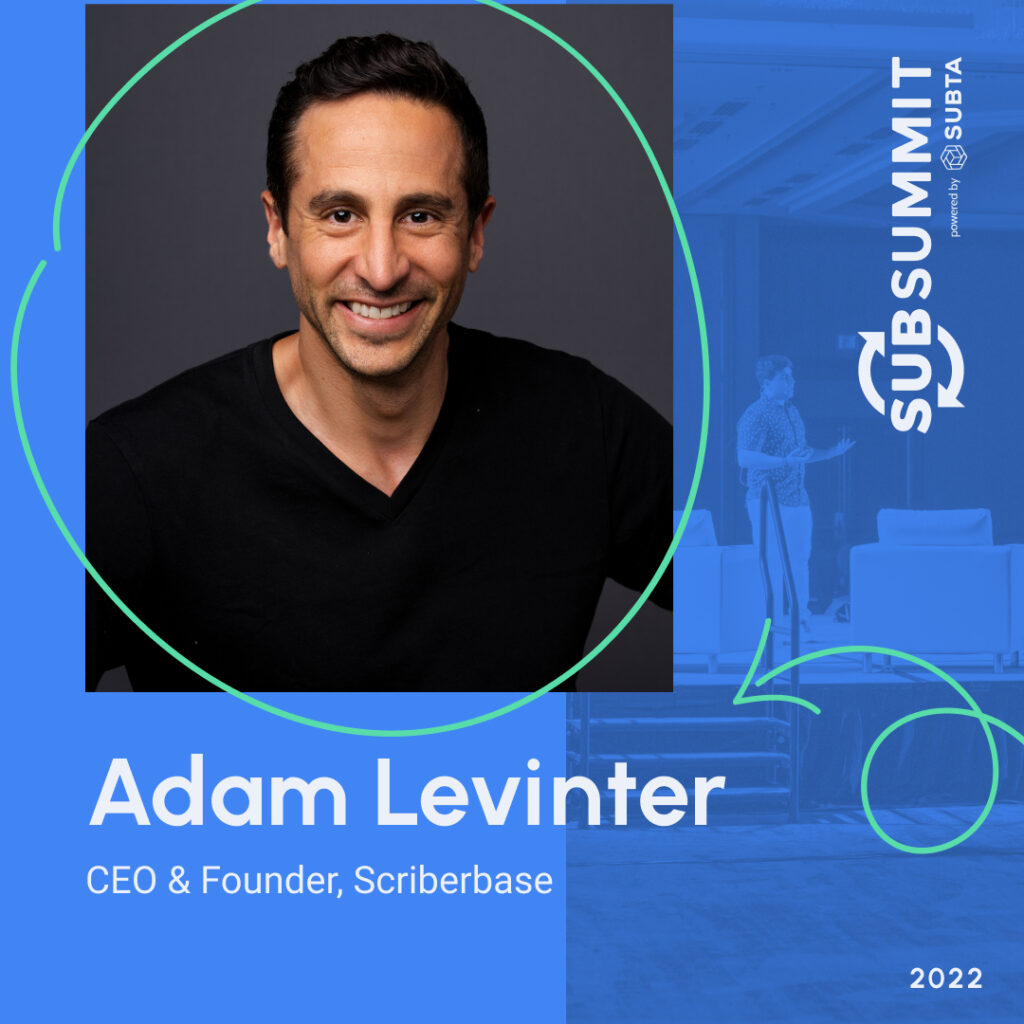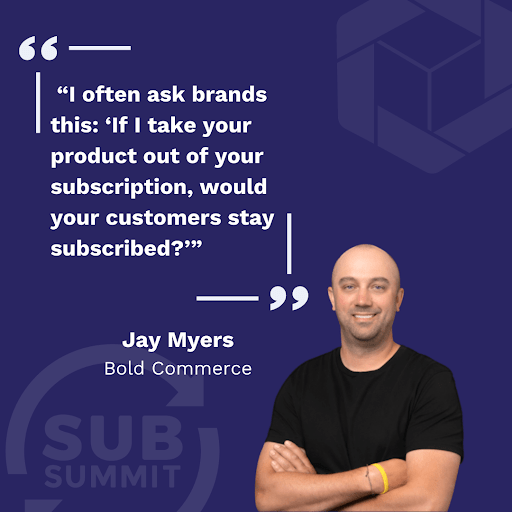
We now live in uncharted territory — yet again. The subscription industry continues to grow at a faster pace than the S&P 500, and a majority of business owners are no longer asking if they need to implement a subscription offering, rather how they can layer in recurring revenues to their existing business models efficiently.
I spoke with Adam Levinter — author of “The Subscription Boom,” CEO of Scriberbase, and a SubSummit 2022 speaker — alongside other subscription experts to answer that question and ensure that you’re able to unlock the next phase of your business through the power of recurring revenue streams.
Subscription Predictions to Monitor
Subscription Prediction #1: The End of Points Programs
Free isn’t always the answer.
It’s especially true when it comes to loyalty points programs, according to Levinter.
“These programs are very company-centric. They’re not customer centric” Levinter says.
“Customers don’t really understand how these programs work,” he adds. “They don’t use their points. They don’t understand the thresholds to redeem. And they just get lost in these programs that are super, super vague.”
The subscription business model relies on a brand’s ability to foster a long-term relationship with its customers. If your loyalty program benefits your company more than your subscribers, then it’s time to re-evaluate your offering.
Luckily, you don’t have to start from scratch. You can learn from industry-leading brands that have built successful loyalty programs, like Amazon.
Unlike other subscription companies, Amazon charges customers who want a VIP experience, and it works. Today, there are more than 200 million Prime members, each happily paying close to $140 a year based on what they get out of it. Levinter explains that Prime members, once enrolled in the membership program, are more likely to shop on Amazon since they get perks like free (and faster) shipping, access to music, movies, etc.

But it’s what Amazon does with the membership dues that make the company so successful, according to Levinter.
“Amazon is a company that can take that revenue and reinvest it back into Prime so that you, as a consumer, are getting way more value out of it,” The SubSummit 2022 speaker explains.
Offering a free loyalty program is no longer good enough, according to Levinter. You need to show your consumers how much you value their loyalty.
More than 40% of U.S. consumers make multiple purchases every week that generate rewards and/or benefits, according to KPMG. If you want to set yourself apart from the competition, it’s time to evaluate charging your subscribers for a VIP experience. But if you do, make sure it’s a no-brainer deal like the Amazon Prime membership.
Amazon is not an isolated case, and it’s important to point that out. Some of this year’s 2022 Cube Awards final nominees for “Best Membership Subscription” are also great examples for you to follow.
MeUndies has a ‘Membership’ page attached to its navigation menu that lays out all the exclusive perks members can take advantage of, including a “skip” feature, free shipping and returns, and much more. Similarly, Vinyl Me, Please lays out all the membership perks available to customers on a page while highlighting an easy cancellation option, which empowers subscribers to feel in control.
Neither membership is free, and it’s what makes each subscription successful.
“Customers love it,” says Levinter. “They’re way more engaged, they spend more money with that brand. And obviously, companies love it because they get loyalty.”
Subscription Prediction #2: Your Product Isn’t Enough to Keep People Around

Don’t limit your subscription to one offering when there are endless opportunities for you to generate revenue.
Your future success may rely on your ability to add more layers to your subscription.
Take Peloton, for example: For the last couple of years, customers have had to purchase the bike (which costs anywhere between $1,495 to $2,495) alongside the membership to participate in the virtual workout classes.
Peloton generates revenue from the bike and its software, but those are not the company’s only two valuable assets. The company offers another element with its subscription: A community. While you can work out alongside co-workers, friends, and relatives, you can also compete against strangers who clearly have similar interests.
If your members see value in forming relationships with one another, “that is a huge opportunity,” says Levinter, and you need to take advantage of it.
Peloton’s community is something all subscription businesses should study. However, the company has encountered several challenges as of late, which led newly appointed CEO Barry McCarthy to test a new pricing strategy: One that would negate the price of the Peloton bike.
As you can see, offering a tangible product and access to software separately may or may not work based on your audience, or the current economic climate, or a number of other factors.

Instead, consider offering a full-stack subscription, as Jay Myers, Co-Founder of Bold Commerce, calls it.
A full-stack subscription offers all three subscription business models at once: Curation, replenishment, and access.
“The brands that are doing this are winning,” Myers said in a SUBTA Lunch & Learn Webinar. “I often ask brands this: ‘If I take your product out of your subscription, would your customers stay subscribed?’”
Take a minute and think about what your answer would be today. If you can’t confidently say yes, it’s time to rethink your strategy and add more value to your subscription stack. Don’t let your product define your company; create an experience through your subscription that speaks for itself.
Subscription Prediction #3: What’s Next for Shipping?
Times are challenging for brands that sell physical goods (and if you only sell physical goods, please re-read the section above).
“You are wrestling with supply chain issues, products are delayed, rising costs, longer lead times… Basically, your entire fulfillment operation is kind of in a mess that you have not experienced before,” Levinter explains.
In 2021, the global schedule reliability was below 40% — the lowest it had ever been, according to Sea-Intelligence data. These last 12 months saw the biggest delays in vessel arrivals as well. As of Q4 2021, vessels experienced a little over seven-day delays on average.
These challenges, of course, impacted the reliability of most — if not all — mail carriers, according to ShipBob. Throughout the coronavirus pandemic, UPS, FedEx, DHL, and USPS all suffered longer transit times, and while most of them are on their way back to pre-pandemic numbers, only UPS has successfully lowered its package transit time in 2021 compared to pre-pandemic era.

These shifts in shipping reliability can have a profound impact on the relationship you are fostering with subscribers.
Nearly half of consumers say delivery speed has become more important to them during the pandemic, according to Metapack. Meanwhile, more than 55% say delivery choice is the most important factor they look at when shopping online.
Proactivity is the best option for subscription business owners. Anticipate everything that could inevitably go wrong at any moment. These shipping issues aren’t going away anytime soon; Levinter and others agree.
So think outside the box. Here are three things you should consider to maximize your growth in these uncertain times:
- Create an all-encompassing experience with your subscription that doesn’t solely rely on the product you’re selling. Can you add a newsletter, a Facebook group, exclusive content (videos, perhaps?) that will keep your subscribers happy even when their orders are delayed?
- Be transparent with your subscriber base. If you know products are not expected to arrive on time, then let your customers know that it’s an issue you’re monitoring and working on resolving. Work to understand how they prefer communications from your brand and keep them informed.
- Don’t hide your cancellation feature, empower your subscribers to choose to stay with you because you believe in the amazing customer experience you provide them every month, quarter, and year! This last point is something I’m thrilled to dive deeper into with Truebill CEO Haroon Mokhtarzada at SubSummit 2022!
Ultimately, I can’t predict the future. I can rely on credible data and discussions I’m having with industry leaders to give you my best guess as to what challenges you might face in the next three quarters. Regardless, the advice you read above will help you unlock the next phase of your subscription business no matter what 2022 throws your way.


